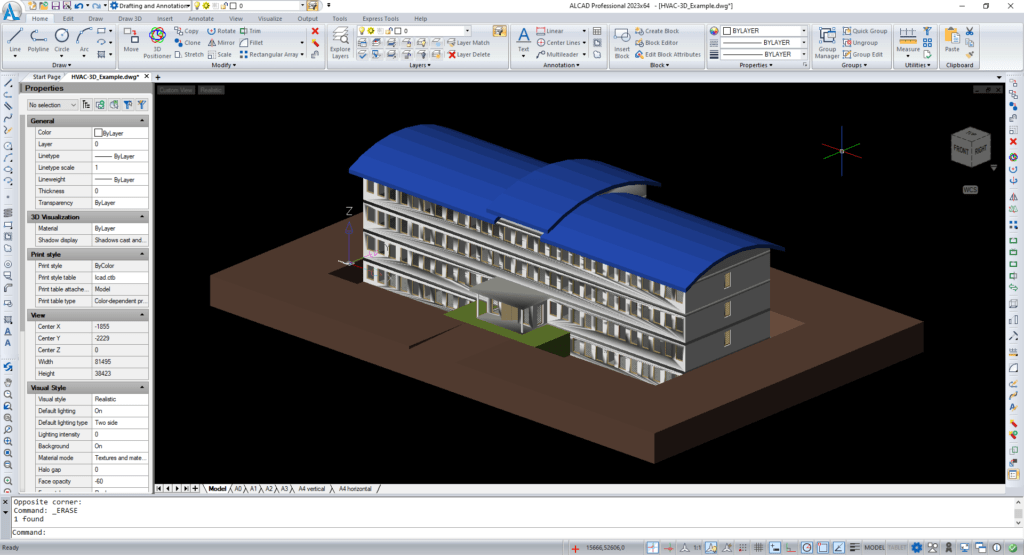The field of industrial design has included 3D editing since before computers were ever imagined. But, the software has completely replaced the old process. Very few projects now proceed without 3D editing.This process is transformative. At its heart lies 3D editing software. It is a virtual playground where ideas take shape, designs evolve, and products come to life. Here, we’ve compiled the best key features currently in use.
The Evolution of Product Design
Technological advances and changing consumer demands have transformed the landscape of product design in recent years. Gone are the days of traditional sketchbooks and physical prototypes; today’s designers wield the power of 3D creation software to sculpt their visions into reality. This evolution has not only revolutionized the way products are conceived and developed but has also elevated the standards of innovation and excellence within the industry.
What Is 3D Editing?
The process of creating three-dimensional (3D) images of items or regions using computer software is called 3D editing. In order to make an object, 3D artists work with vertices, which are points in the virtual environment, to form a mesh. The list of the main justifications for why product design companies ought to begin utilizing 3D editing as soon as possible is extensive. 3D editing can be used for any purpose, regardless of whether you are offering things, thoughts, concepts, or properties.
3D Editing Software Makes All Products easily adjustable
3D editing software is highly adjustable. It is a valuable tool for product design companies. It lets graphics artists easily change any part of a 3D item. This includes size, shape, material, and texture.

Users can easily add or delete pieces from the design, enhancing flexibility and customization. Also, with plugins, 3D editing software becomes more adaptable. It helps make changes to product designs with unmatched ease.
Exploring ALCADs 3D Plugins
The demand for complex, customizable product designs is soaring. So, the role of plugins in 3D editing software is becoming more important. ALCAD 3D plugins are prime examples of this integration. They offer many functions to designers and engineers.
These plugins are invaluable extensions to 3D editing software. They provide specialized tools tailored to solve specific design challenges. The plugins handle a range of tasks, including optimizing airflow, simulating underfloor heating, and mapping sewer pipelines.
Key Features and Functionalities
At the core of 3D editing software are many features. They are designed to speed up design and boost creativity. The tools have digital signature and sketch modes, advanced rendering, and support for many languages. They empower designers to push the limits of creativity and skill.They translate conceptual concepts into concrete prototypes.
Let’s dive into the key features and functionalities that make 3D editing software indispensable for product design:
Digital Signatures: Ensure document authenticity and security.
Sketch Modes & Selection Grips: Enable precise editing and manipulation of objects.
Raster Image Support: Enhance visual representation by incorporating raster images into designs.
Export Options: Seamlessly export designs in 2D and 3D PDF formats for easy sharing and collaboration.
Programming Language Support: Customize and extend functionality using languages like LISP, IRX/DRX, and SDS.
Visual Styles & Materials: Experiment with different visual styles and materials to achieve desired aesthetics.
Realistic Rendering: Create lifelike renderings that showcase the product in its intended environment.
Advanced Rendering Add-On: Further enhance visualizations with advanced rendering capabilities.
eTransmit Support: Simplify file sharing and collaboration with etransmit support.
Text Explode and Gradient Hatch: Add detailed annotations and visual enhancements to designs.
Multi-Core Support: Leverage the power of multi-core processors for faster processing and rendering.
Multi-Language Support: Ensure accessibility for users worldwide with multi-language support.
Utilizing 3D Editing Software in Product Design
The true power of 3D editing software shines through in its application in product design. Designers can use these tools to turn concepts into prototypes and iterate and refine designs along the way. The software has intuitive interfaces and robust features. It empowers designers to embrace their creativity and push the limits of what’s possible.
Best Practices and Tips
As designers embark on their journey with 3D editing software, it’s essential to keep a few best practices in mind:
Master the Tools: Take the time to familiarize yourself with the tools and features available in the software.
Experiment and Explore: Don’t be afraid to experiment with different plugins and functionalities to discover new ways of working.
Stay Updated: Stay ahead of the forefront by keeping abreast of the latest advancements and updates in 3D editing software.
How Can ALCADs Help?
3D editing evolves each year, and ALCADs is here to help you find the right professional and software for your next project. You will not only visualize your concept, but you will also enjoy the benefits of modern technology.
Conclusion
We navigate the ever-changing product design landscape. One thing is clear: 3D editing software is very powerful and unmatched in its versatility. It has intuitive interfaces and robust features. It keeps redefining what’s possible. It lets designers push the limits of creativity and innovation. As we look to the future, the options are limitless. It’s the most exciting journey from idea to product ever.
Recent studies show that companies that use 3D design technologies cut time to market. Some report up to a 50% drop in product development cycles. 3D editing software is increasingly being adopted. This increase has the potential for innovation and change in product design.

